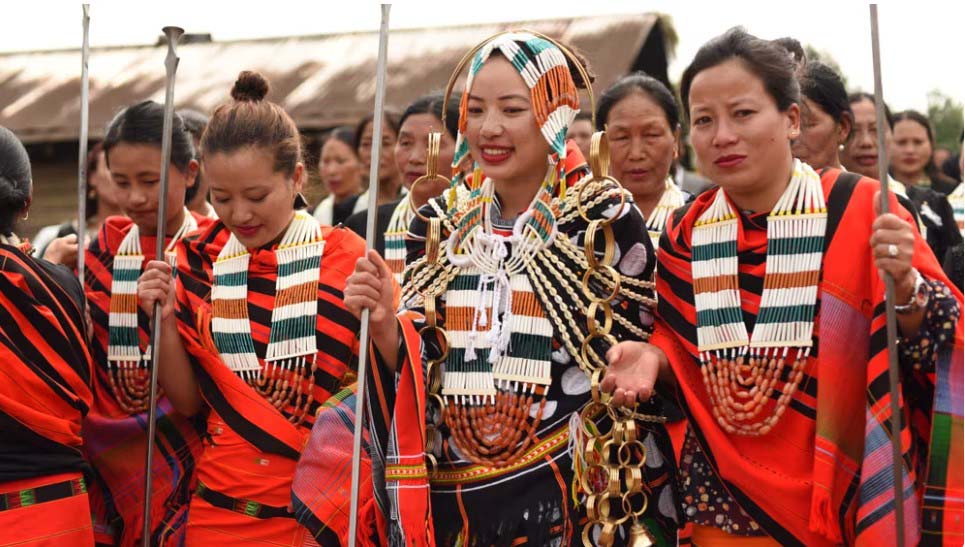As much as the ethnic mosaic in Manipur is complex, a solution to its ethnic problem is going to be as difficult. There are too many factors to cover, too many rising ethnic aspirations and nationalisms. As the late Prof. Gangmumei Kamei, one of the few personalities from the state revered by all communities, said in his extremely illuminating ‘The 2nd Arambam Somorendra Memorial Lecture’, almost all of these new identities are opposed to the larger Indian identity in some way or other, but also at the same time as vehemently opposed to each other.
The multiplication of identity assertion in modern times must also directly have to do with a democratisation of education. Even as the mental and physical horizons of previously closed worlds of backward, illiterate, ethnic communities expanded, their awareness of themselves in relation to the new and larger world would have changed drastically and dramatically. The Hegelian question which all humans are destined to ask at every given point, “who am I?” would also have acquired new significance calling for new answers. New experiences, new visions, new vocabulary, new understanding of the self and the rest, their limitations as well as strengths, would have deepened the query. Thus came the new dawns of an ever increasing number of ethnic nationalities.
Quite without dispute, the multiplication of identities would also be a multiplication of problems. This is probably where Manipur is today. The question now must be, where must we go from here and not why cannot it be as good as it once used to be. This is precisely the shape of Manipur’s most challenging problem of its modern times. State formation happened earlier amongst the settled agriculturalists Meiteis, settled in the fertile plains of the Imphal Valley, and therefore the old identity of Manipur is closer to them. This is one of the hurdles, for the community is given to an abiding and indeed understandable nostalgia of a past statehood, foreclosing any new interpretation of the greatly transformed realities of the present and therefore also in imagining the future ahead.
The crisis at this moment is the crisis of the generic “Manipuri” identity. There is never a doubt as to what the “Meitei” identity is, or “Koireng” identity is, and for that matter the identity of any other particular ethnic community, but the question is what should be the common understanding of a Manipuri identity. This is also so much like the lager Indian identity, the exact character of which is defused and disputed. The country’s founding fathers gave it a constitutional definition to which the identities of all the constituent communities individually can belong. However, nostalgia of past imagination of identities surface periodically to lean the understanding of the Indian identity towards religion, culture, language etc., causing frictions for in essence its peoples and cultures are extremely diverse.
The incongruity of this larger Indian identity with those of ethnic communities in the Northeast and places like Kashmir, arguably is one of the chief causes for the numerous and ever mushrooming insurgencies in these region. In this sense, much newer Naga or Mizo identity have been more successful than the Manipuri identity, in the sense of these notions being accepted and internalised by the disparate communities that come under them.
As for instance, there is nothing that is uniquely similar between say an Ao and an Anal except for the nomenclature Naga, normally suffixed to their tribe names, and yet each have come to share a sense of peoplehood, regardless of the fact that quite many Aos or Yimchungers, even the elite, do not know where in Manipur Anals or Marings come from, and we are sure this ignorance is mutual. For whatever the reason, despite all its contradictions which it is riddled with even today, it is an identity which has given a vital spark to an abiding and common ethnic identity imagination. The story is very similar when it comes to the Mizo identity as well, and as a matter of fact, the Mizo identity is newer than even Naga, and once upon a time it was the Lushais at the top and smaller “slave tribes” were under them. Today, all have left their original tribe affiliations to a great extent and have assumed the larger collective identity of the Mizo.
The question is, where exactly has been the failure of the “Manipuri” identity? Perhaps there is a big lesson to be learnt from the much bigger journey of the Indian identity as such. Decades of emphasizing on its uniqueness consistently met with failures. Be it the question of “Rashtra Bhasha” (national language) or religion, they never clicked and there were always resistances and oppositions. In many ways, the Indian identity found itself when it discovered what Amartya Sen made famous in his writings five decades later – the multiplicity of identity as a basic condition of modern life.
Sen points out that the modern man is a complex combination of many identities at the same time. Anybody who accepts this can also accommodate differences. He or she would also be much more comfortable in a heterogeneous environment than a monolithic one. Perhaps introspection on the “Manipuri” identity has to begin at this point. On the smaller canvas, maybe the journey of the “Indian identity” is what Manipur has to make at this juncture to rediscover and reinvent itself. Perhaps again this journey can begin with the larger question that Prof Gangmumei implied in his lecture: Where do we come from, where are we and where are we heading? Maybe it is also time to begin listening not just to the voices of aspirations, but also to voices of basic insecurities. The reincarnated “Manipuri” identity that must face the brave new world, which must definitely have to be a democratic one too.












